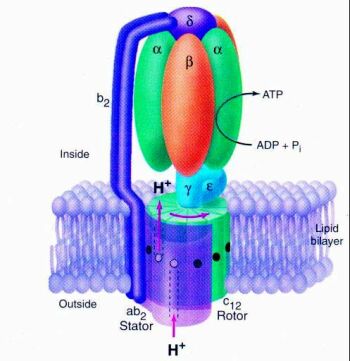Metabolism is the process of breaking down fuel and building up tissues
Metabolism is the sum of two processes…catabolism – breaking things down and anabolism – building things up (that’s where anabolic steroids come from!)
In a perfect cycle, this process is energy neutral: you break down enough to build up what you need.
If we were a fire, we would breakdown wood (or fuel) and make heat, but also smoke (our energy output).
Getting it? Let’s try one more explaination, this one a little bit more complex. If we were a combustion engine, we would use gasoline (fuel) to create motion and also heat (our energy output).
Let’s break this down into three things: fuel, energy, and storage.
Fuel:
(source)
Obviously, you know we use food for fuel. Otherwise you wouldn’t be seeking out food blogs, you wouldn’t be interesting in metabolism, etc. Food is our fuel in the form of macromolecules: protein, carbohydrates, and fats. Each of which are worth calories: the currency of fuel.
Calories are actually best understood using our fire metaphor. The definition of a food calorie the energy needed to increase the temperature of 1 kilogram of water by 1 degree Celsius. FYI a food calorie is actually determined by doing exactly that in something called a bomb calorimeter. Awesome, eh?
1 gram of carbohydrate or protein = 4 calories, fat equals 9 calories.
As we talked about earlier during the post on carbohydrates, your body can use all of these sources of fuel, but your brain can only use carbohydrates. Carbohydrates can get to your brain via your blood stream, and that is why having low blood sugar can lead to blacking out or even death. Without brain function, your body function stops pretty quickly.
We feed our bodies protein, fat, and carbohydrates to fuel it. It should be that simple, but modern diets has complicated that a little bit. Here are the highlights:
It turns out that many people have an intolerance to the sugar in dairy: lactose, so we can’t use that carbohydrate and it causes gastrointestinal distress. More details here.
Diets high in processed foods tend to lack vitamins. These vitamins act as co-factors for enzymes in your body to break down food. If you don’t get enough vitamins, your body can fail to rebuild itself correctly. This can be as minor as digestive issues and as major as blindness and muscle degeneration.
There is evidence that trans fats – the fats made from chemically changing the structure of plant fats to give them a longer shelf life – aren’t utilized by your body the same way normal fats are. We don’t really know why yet, but trans fats are more likely to fill our your fat cells and stay there…
Energy:
(source)
Once your body gets fueled, it breaks down the fuel into the most useable energy unit: ATP (or equivalents). ATP is like the spark by a spark plug. You can’t even get your engine started without it. ATP is used in making new DNA during cell division…in building new muscles…and in breaking down stored energy sources for energy when the body needs them. So, it’s very cyclic. You need to have enough energy to burn your stored energy…which is why starvation doesn’t work very well as a method of quick weight loss!
The process of making energy is actually pretty cool…and I want to be able to describe how some diet pills REALLY work in the future, so I want to quickly describe it.
The fuel is fed into system in your mitochondria (an organelle in your cells) called oxidative phosphorylation. It breaks down fuel and builds up a gradient of positive charges on one side of the mitochondrial membrane. That makes an electric potential. It’s exactly like static electricity. When you get that shock, it’s a release of an electric charge built up on that surface onto you.
(source)
The body wants to maintain electrical neutrality, so it wants to bring down the number of positive charges on one side of the membrane…it does this by harnessing the flow of the positive charges to something called an ATP synthase. It is an enzyme that makes ATP. It looks like this:
In my opinion, it is one of the coolest looking enzymes ever. The positive charges cause the enzyme to turn like a motor as they flow through the enzyme, which makes ATP. So cool. It’s kind of the same idea as a windmill. The wind causes the windmill to turn and make energy. A very tiny windmill.
Energy Storage:
Your body has the coolest ability to store energy for later. It does this in a few different ways:
Glycogen is the storage of carbohydrates. It is in your liver and your muscles and is called upon for quick production of energy for your muscles (like when you exercise), your brain, or any other building process.
Fat is the body’s preferred long term storage unit. It can store more compactly than sugars (if you take issue with your fat cells, you may not believe me, but it’s true) and it spoils very slowly. It also takes more energy to convert fats into fuel, so your body will call upon other sources before breaking it down.
Muscles. Yes, your body will break down your muscle for fuel if you give it no other choice. Also, proteins, which make up muscles, are made of amino acids, which your body uses to make important cofactors and signaling molecules. If your diet is deficient in amino acids (i.e. protein) your body will break down muscle to get those amino acids. That’s why you can store a lot of fat yet still lose muscle due to a poor diet.
Ok, that’s all for now. Coming next: Metabolism Part 2: Metabolism and Exercise








Hi, Just found your blog via CnC's bake sale. This post was great - Thanks for putting it in leymans terms for us non-docs!
ReplyDelete